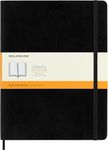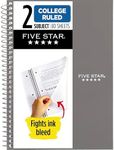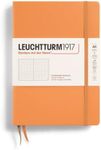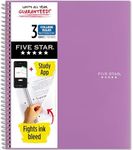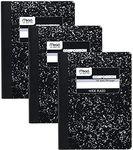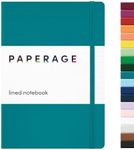Buying Guide for the Best Notebooks
Choosing the right notebook can be a daunting task given the variety of options available. The key to making the right choice is understanding your needs and how different specifications align with those needs. Whether you need a notebook for work, study, gaming, or general use, knowing what to look for will help you make an informed decision. Here are some key specifications to consider when selecting a notebook and how to navigate them.Processor (CPU)The processor, or CPU, is the brain of your notebook. It determines how fast and efficiently your notebook can perform tasks. For basic tasks like web browsing and word processing, an entry-level processor like Intel Core i3 or AMD Ryzen 3 will suffice. For more demanding tasks like video editing or gaming, a mid-range processor like Intel Core i5/i7 or AMD Ryzen 5/7 is recommended. High-end processors like Intel Core i9 or AMD Ryzen 9 are best for professional-grade tasks and heavy multitasking. Choose a processor based on the intensity of the tasks you plan to perform.
RAM (Memory)RAM, or Random Access Memory, is crucial for multitasking and running applications smoothly. More RAM allows your notebook to handle more tasks simultaneously. For basic use, 4GB of RAM might be enough, but 8GB is generally recommended for a smoother experience. For more intensive tasks like gaming, video editing, or running multiple applications at once, 16GB or more is ideal. Consider how many applications you use at once and the complexity of those applications when deciding on the amount of RAM.
StorageStorage determines how much data you can save on your notebook. There are two main types: HDD (Hard Disk Drive) and SSD (Solid State Drive). SSDs are faster and more reliable but usually more expensive, while HDDs offer more storage space at a lower cost. For faster boot times and application loading, an SSD is recommended. A 256GB SSD is a good starting point for most users, but if you store a lot of large files, consider a 512GB or 1TB SSD. Some notebooks offer a combination of both SSD and HDD for a balance of speed and storage capacity.
DisplayThe display is important for your viewing experience. Key factors include size, resolution, and panel type. A 13-14 inch display is portable and good for general use, while a 15-17 inch display offers more screen real estate for tasks like gaming or video editing. Resolution affects clarity; Full HD (1920x1080) is standard and sufficient for most users, but higher resolutions like 4K (3840x2160) provide sharper images. Panel types like IPS offer better color accuracy and viewing angles compared to TN panels. Choose a display based on your need for portability, clarity, and color accuracy.
Battery LifeBattery life is crucial if you need to use your notebook on the go. It determines how long you can use your notebook without needing to recharge. For basic tasks, a notebook with 6-8 hours of battery life is usually sufficient. For more intensive use or longer periods away from a power source, look for notebooks with 10-12 hours or more. Consider how often you will be away from a power outlet and choose a notebook with a battery life that matches your usage patterns.
Graphics Card (GPU)The graphics card, or GPU, is important for tasks that require rendering images, videos, and games. Integrated graphics are sufficient for basic tasks and light gaming. For more demanding tasks like video editing, 3D rendering, or high-end gaming, a dedicated GPU like those from NVIDIA or AMD is recommended. Entry-level GPUs are good for casual gaming and basic video editing, while mid-range and high-end GPUs are necessary for more intensive tasks. Choose a GPU based on the graphical demands of the applications you plan to use.
Operating SystemThe operating system (OS) is the software that manages all the hardware and software on your notebook. The most common OS options are Windows, macOS, and Linux. Windows is versatile and supports a wide range of software, making it suitable for most users. macOS, exclusive to Apple notebooks, is known for its smooth performance and integration with other Apple products. Linux is preferred by developers and those who need a customizable and open-source OS. Choose an OS based on your software requirements and personal preference.
Build Quality and DesignBuild quality and design affect the durability and aesthetics of your notebook. Materials like aluminum and magnesium alloy offer better durability compared to plastic. A well-built notebook can withstand daily wear and tear and last longer. Design aspects like weight and thickness affect portability; lighter and thinner notebooks are easier to carry around. Consider how often you will be transporting your notebook and choose one with a build quality and design that suits your lifestyle.
ConnectivityConnectivity options determine how you can connect your notebook to other devices and networks. Common ports include USB-A, USB-C, HDMI, and headphone jacks. USB-C is becoming more popular due to its versatility and ability to charge devices. HDMI ports are useful for connecting to external displays. Also, consider wireless connectivity options like Wi-Fi and Bluetooth. Ensure the notebook has the necessary ports and connectivity options for your peripherals and network needs.

